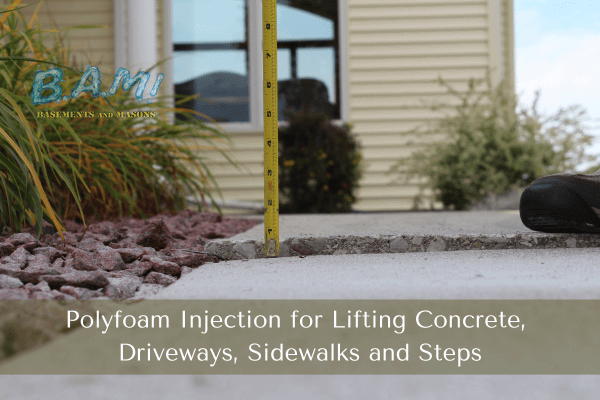Fascination About Best Basement Waterproofing
Fascination About Best Basement Waterproofing
Blog Article
Indicators on Best Basement Waterproofing You Should Know
Table of ContentsGetting My Best Basement Waterproofing To WorkSome Known Details About Best Basement Waterproofing All about Best Basement WaterproofingAn Unbiased View of Best Basement WaterproofingBest Basement Waterproofing Fundamentals Explained
AdvantaClean's qualified professionals and technicians will situate the water source. If wall or piece fractures are existing, we will infuse polyurethane and epoxies into the splits and seal the compromise, preventing more wetness from getting in.If there's condensation on the exterior of the aluminum foil, you have high humidity in your basement. If the aluminum foil has condensation on the within surface (following to the wall), the soil around your residence might be normally damp from a high water table or poor dirt drainage.
You can waterproof just your indoor walls, which may solve the trouble. Once they dry, they stick completely to concrete and stonework wall surfaces.
Not known Facts About Best Basement Waterproofing
Concrete waterproof finishes can't be used to previously repainted surface areas; check the tag. Known as densifiers, they are suitable just for wall surfaces that haven't been painted or sealed.
You brush, roll, or spray it on a lot even more thickly one gallon covers just 75 square feet, not the 300 square feet normal with standard paint. Water-proof paint is great for DIY application. You can apply it over repainted surface areas, and paint over it once it's healed (one gallon expenses $37).
It can cost $10,000 to $15,000, depending on the work needed. Exterior waterproofing involves digging deep into all around the house to the complete depth of the foundation walls, then installing a water resistant layer or membrane layer topped by drainage panels.
A cellar without waterproofing is kind of like that. Your basement doesn't desire to go with a downpour without appropriate security simply as much as you don't desire to.
Examine This Report on Best Basement Waterproofing
Yet if you've done your research, you would certainly know there are Click This Link two types of waterproofing: exterior and interior. It can get perplexing what they both mean, which one's a better financial investment, and what will actually keep the water out. Do not worry, we created this blog site to conveniently define both approaches for you and go over the pros and cons of each.
Exterior waterproofing is a waterproofing technique that includes sealing your home from the outside. It's kind of like a moat around a castle. It involves excavating a trench around your whole house down to the structure (concerning 8 to 10 feet down). The foundation wall surfaces are then cleansed, secured, and covered with a water resistant membrane or sealer.

Excitement About Best Basement Waterproofing
It's a more involved procedure that requires excavating up your backyard, which is costly and time-consuming. Exterior waterproofing involves eliminating everything surrounding your home, including decks, driveways, sidewalks, landscaping, air conditioning devices, decks, and so on. If any one of the work was done improperly and water is still entering your basement, there isn't much you can do to remedy or repair it.
Inside basement waterproofing entails waterproofing from the inside. Any type of water that leaks right into your cellar is rerouted before it touches your flooring. It's kind of like wearing a raincoat under your clothes. It entails 2 points: a water drain track and a sump pump. It functions by securing the within of your cellar wall surfaces and floors so water that attempts to go into is funnelled out via a sump pump.
It's a reliable approach to water-proof your cellar - Best Basement Waterproofing. The disadvantage of interior basement waterproofing mainly has to do with the setup procedure. This method requires kept things, furniture, and built-in shelving or cupboards to be relocated from touching the basement wall surfaces. And throughout setup, your basement can not be made use of. The greatest difference between the two techniques is this: Exterior waterproofing is a preventative solution and interior waterproofing is a rehabilitative solution.
The smart Trick of Best Basement Waterproofing That Nobody is Talking About
To conclude, exterior and indoor cellar waterproofing are both effective approaches of safeguarding your home from water damage. Exterior waterproofing develops an obstacle that protects against water from entering your home, while indoor find waterproofing redirects water that does enter your home. And it is necessary to note that exterior waterproofing is a costly and disruptive installation process when compared to indoor waterproofing.
Whichever approach you choose, make sure you select a reputable and reliable service provider for the work. Both techniques require seasoned workers to deal with the work. If you have any type of concerns concerning cellar waterproofing, please get to out to us. And if you remain in our service area and have water in your basement, call us for a totally free, no-obligation home assessment.
You can fill up out our form here, begin a this link chat in the bottom right-hand corner, or call us at 1-800-827-0702.
Report this page